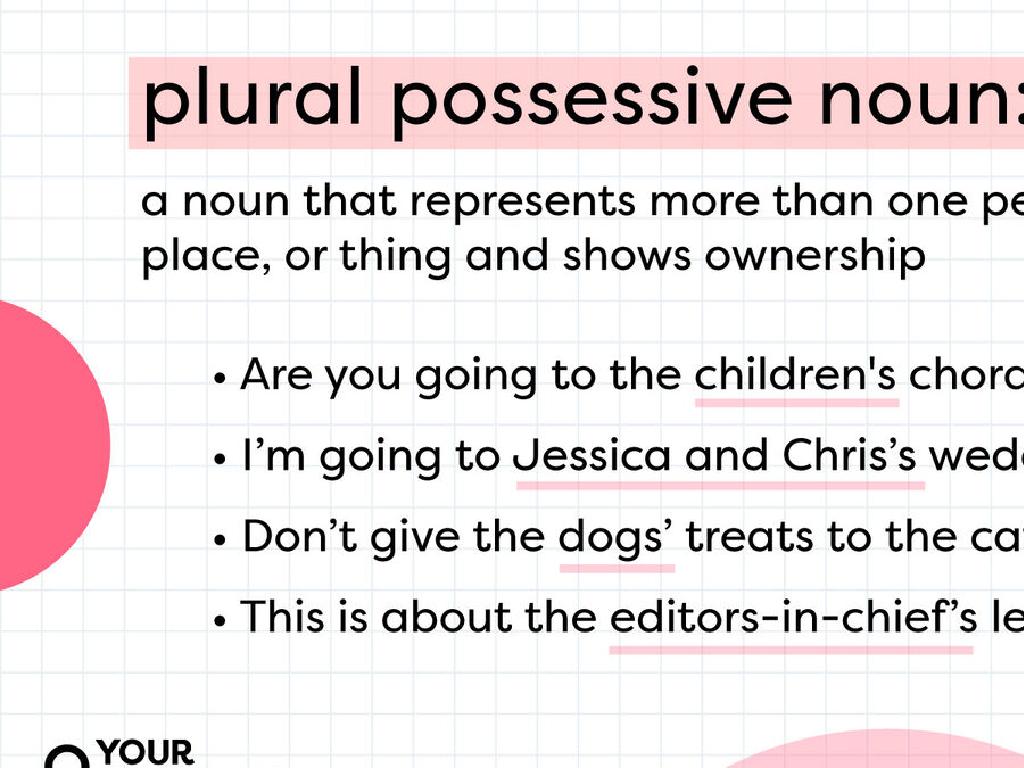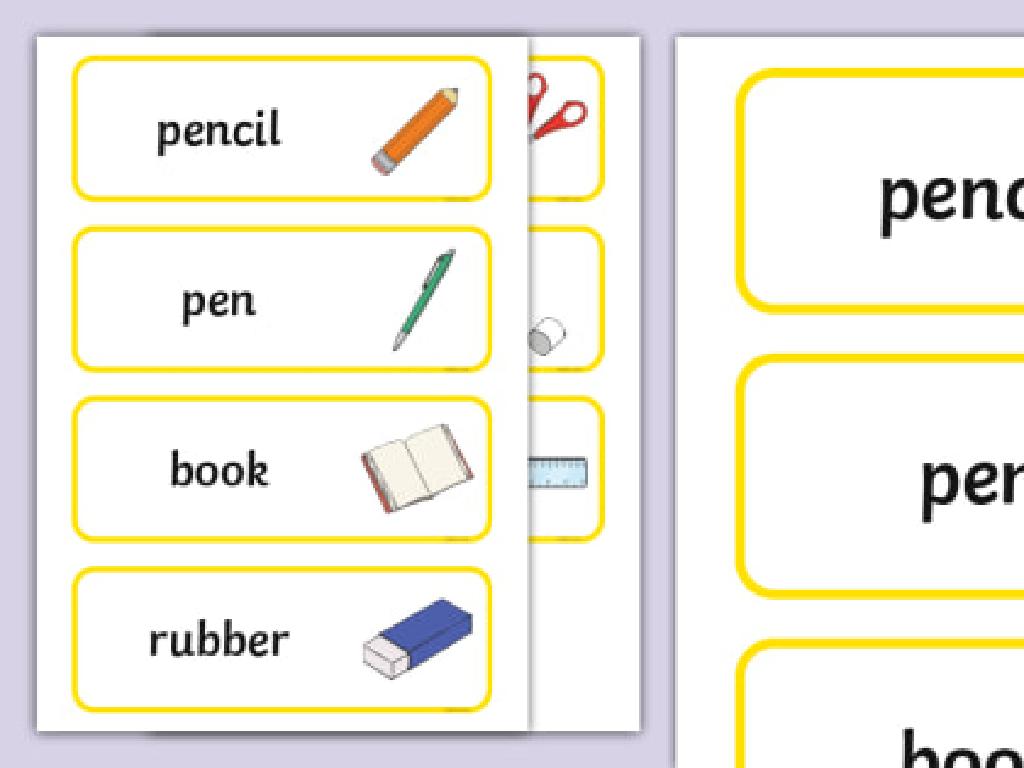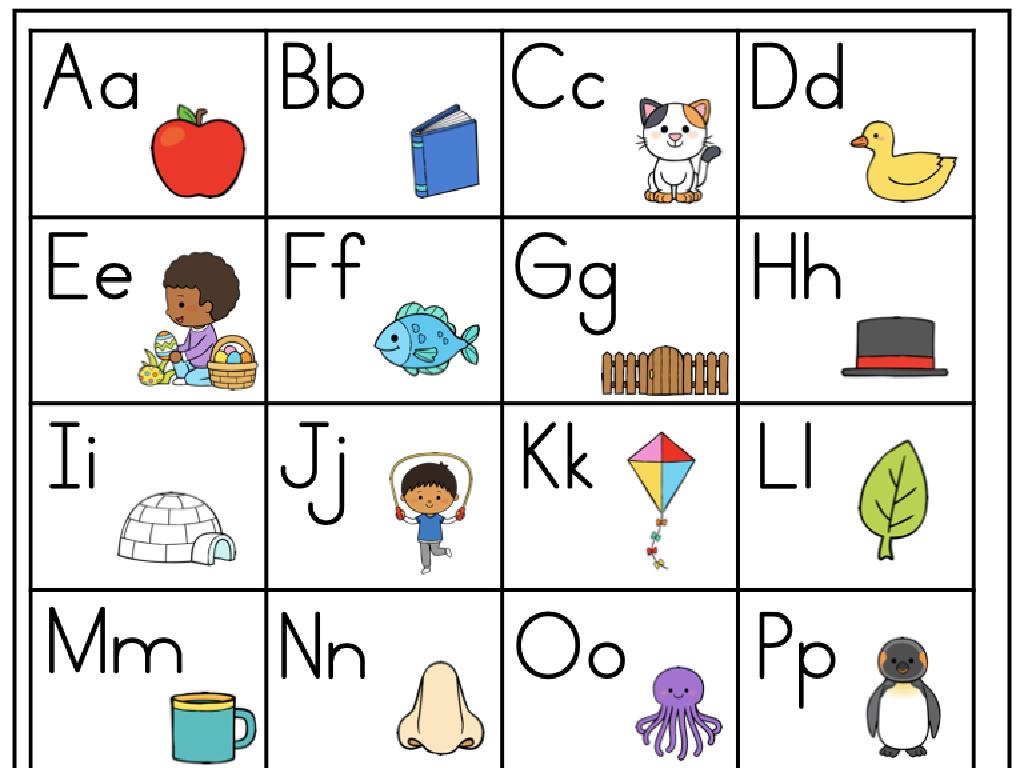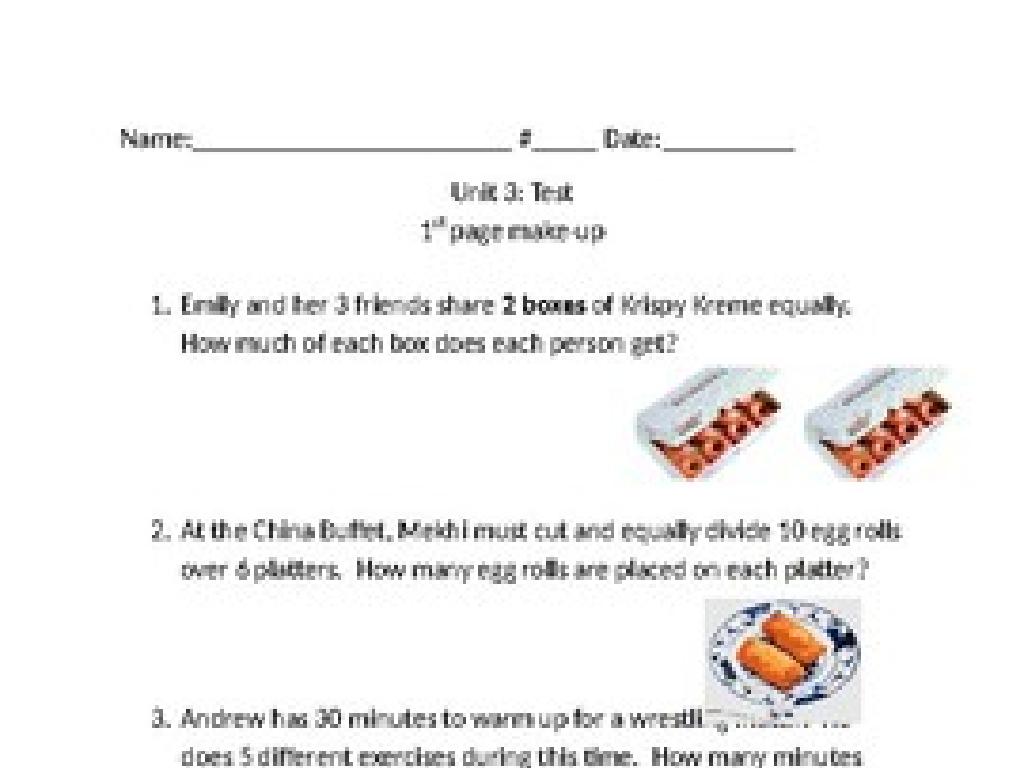Sort Objects By Material
Subject: Science
Grade: First grade
Topic: Materials
Please LOG IN to download the presentation. Access is available to registered users only.
View More Content
Welcome to Materials!
– Greet the class: Good morning!
– Today’s topic: Learning about materials
– Materials are what things are made from
– Sorting objects by material
– We’ll group things by wood, plastic, metal, etc.
– Hands-on sorting activity
– Bring an object from home to sort in class
|
This slide is designed to introduce first graders to the concept of materials in science. Start the class with a warm greeting to create an inviting atmosphere. Explain that materials are the substances objects are made from, like wood, plastic, or metal. Engage the students by discussing common objects and what materials they might be made of. Introduce the hands-on activity where students will sort objects based on their materials, which will help reinforce their understanding of the topic. Encourage them to bring an item from home for this activity, ensuring they get a practical understanding of how to categorize objects by material.
Exploring Materials Around Us
– Understanding materials
– Everything is made from a material
– Examples of common materials
– Metal, plastic, wood, glass, fabric
– Materials fit for purpose
– Choose materials based on what we need
– Observing materials in daily life
|
This slide introduces the concept of materials to first-grade students. Begin by explaining that a material is what objects are made from, using simple language and relatable examples. Show them everyday items like a metal spoon, a plastic toy, a wooden chair, a glass window, and a fabric shirt. Discuss how each material is chosen for a specific reason, such as strength, flexibility, or comfort. Encourage the students to look around their classroom and home to identify objects and the materials they are made from. This will help them understand the variety of materials we use in our daily lives and the importance of selecting the right material for each object.
Exploring Materials: Wood and Metal
– Examples of wooden items
– Chair, table, pencil
– Examples of metal items
– Spoon, coin, robot toy
– Different materials for different uses
– Wood is sturdy for furniture, metal is durable for tools
– Why materials matter
|
This slide is aimed at helping first graders understand the concept of materials and their uses. Start by showing them common items made of wood and metal, asking them to identify more such items. Discuss why different materials are used for different objects, like wood for furniture because it’s strong and metal for utensils because it’s durable and easy to clean. Encourage the students to think about the properties of materials and why certain materials are better suited for certain objects. This will help them understand the practical applications of materials in everyday life.
Sorting Objects by Material
– What does sorting mean?
– Sorting is grouping similar things together.
– Ways to sort objects
– We can sort by color, size, shape, or what it s made from.
– Today’s focus: Material
– We’ll learn to group things by wood, plastic, metal, etc.
– Examples of materials
– Wood: pencil, stick. Plastic: bottle, toy. Metal: spoon, coin.
|
This slide introduces the concept of sorting to first graders, which is an important skill for organizing and categorizing objects. Sorting helps us make sense of the world by grouping similar items. Today’s lesson focuses on sorting objects based on the materials they are made from, such as wood, plastic, or metal. Provide clear examples for each material type and encourage students to think of their own examples. This activity will help students understand the variety of materials that objects can be made from and how to identify them.
Activity: Material Match-Up
– Observe objects in our classroom
– Determine materials of objects
– Is it made of plastic, metal, wood, or fabric?
– Group similar materials together
– Place all plastic items together, and so on
– Discuss our material groupings
|
This activity is designed to help students understand the concept of categorization based on materials. Provide a variety of objects made from different materials such as plastic, metal, wood, and fabric. Guide the students to examine each object and determine the material it is made from. Once they have identified the materials, instruct them to group the objects with others made from the same material. After the activity, have a discussion about why objects are made from certain materials and how we can recycle or reuse them. Possible activities for different students could include sorting classroom supplies, toys, or items from nature. This hands-on approach will reinforce their understanding of materials and their properties.
Class Activity: Find and Sort Game
– Receive a mix of objects
– Sort objects into labeled bins
– Bins may be labeled ‘plastic’, ‘metal’, ‘wood’, ‘fabric’
– Discuss sorting choices
– Why does a spoon go in ‘metal’? Think about what it’s made of!
– Collaborate with classmates
|
This interactive class activity is designed to help students learn about materials by sorting objects. Provide a variety of objects for the students to sort, such as a wooden block, a plastic bottle, a metal spoon, and a piece of fabric. Each bin should be clearly labeled with one material. Encourage students to touch and feel each object, discussing with their peers why they believe it belongs in a particular bin. This will help them understand the properties of different materials. Possible variations of the activity could include sorting by color, size, or shape to accommodate different learning objectives or to keep the activity fresh and engaging.
Review: Sorting by Material
– Recall water bottle material
– Identify pencil material
– Sorting materials activity
– Which bin for metal, plastic, wood?
– Materials are everywhere
|
This slide is meant to review and reinforce the day’s lesson on sorting objects by their material. Start by asking the students to recall what material a water bottle is made from, guiding them to answer ‘plastic.’ Next, ask about a wooden pencil and which bin it would go in, expecting ‘wood.’ Praise their efforts in sorting materials today and remind them to observe the materials that make up the objects around them. For the activity, have different bins labeled with material types like metal, plastic, and wood, and encourage students to sort various classroom items. This interactive review will help solidify their understanding of materials and their ability to categorize objects based on this characteristic.
Great Sorting Work!
– Celebrating our learning
– Materials can change shapes
– Next class, we’ll see how materials like clay and paper can be transformed.
– Get ready for more fun
– Applaud yourselves, sorters!
– You’ve all been amazing at sorting different materials today!
|
This slide is meant to wrap up the current lesson on sorting objects by material and to praise the students for their efforts. It’s important to acknowledge their hard work and to build excitement for the next lesson, where they will learn about the malleability and flexibility of various materials. Encourage the students to give themselves a round of applause to boost their confidence and sense of accomplishment. This positive reinforcement helps to create an enthusiastic learning environment and prepares them for the upcoming class with curiosity and eagerness to learn more.






